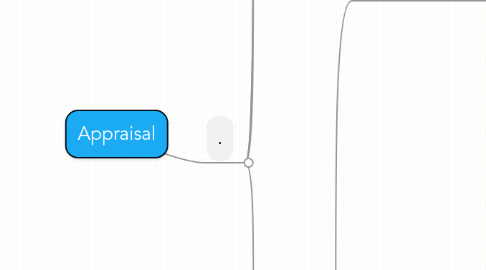
1. .
1.1. Process
1.1.1. Define-apply different approaches-reconcile
1.2. Reports
1.2.1. Letter Form - Short Form -Narrative
1.3. Valuation
1.3.1. Principle of Substitution
1.3.1.1. Basis of 'Comparison' = Market Data = Substitution approach
1.3.2. Principle of Highest and Best use
1.3.2.1. Parcel of land
1.3.2.1.1. interim = current use
1.3.2.2. Site Approach
1.3.3. Principle of Conformity
1.3.4. Principle of Contribution
1.3.4.1. Remodel
1.3.4.1.1. Net effect on Income
1.3.5. Principle of Regression
1.3.6. Elements of Value
1.3.6.1. Demand
1.3.6.2. Utility
1.3.6.3. Scarcity
1.3.6.4. Transferability
1.3.7. Forces On Value
1.3.7.1. Governmental
1.3.7.2. Economic
1.3.7.3. Environmental and Physical Characteristics
1.3.7.4. Social Ideals
1.3.7.5. Additional Factors
1.3.7.5.1. Exposure
1.3.7.5.2. Topography
1.3.7.5.3. Orientation
1.3.7.5.4. Cost
1.3.7.5.5. Market Price
1.3.7.5.6. Effective age.
1.4. Methods
1.4.1. Market Data Approach = Comparison = Comparative = Substitution Approaches
1.4.1.1. Appraise Amenities
1.4.1.2. Unit of Comparison
1.4.1.2.1. single family home
1.4.1.3. Rental Schedules
1.4.1.4. Features
1.4.1.4.1. Adjust value by subtracting value of the feature from the sales price of comparable
1.4.2. Cost Approach
1.4.2.1. Replacement Cost =
1.4.2.1.1. Estimate value of land
1.4.2.1.2. Front Foot Value
1.4.2.1.3. Cost / foot or Acre
1.4.2.1.4. Estimate Replacement Cost of Improvement
1.4.2.2. Specific Purpose Building
1.4.3. Capitalization Approach
1.4.3.1. Present Worth of future benefits
1.4.3.1.1. V = I/R
1.4.3.2. Calculate Annual Net Income
1.4.3.2.1. Economic Rent - Vacancies - taxes - insurance - utilities - reserves
1.4.3.3. Calculate Cap Rate
1.4.3.3.1. Comparison
1.4.3.3.2. Band of Investments
1.4.3.3.3. Summation
1.4.4. Gross Multiplier Approach
1.4.4.1. Sales Price of Comparable / Gross Monthly Income
1.4.4.2. Site Analysis not as important
